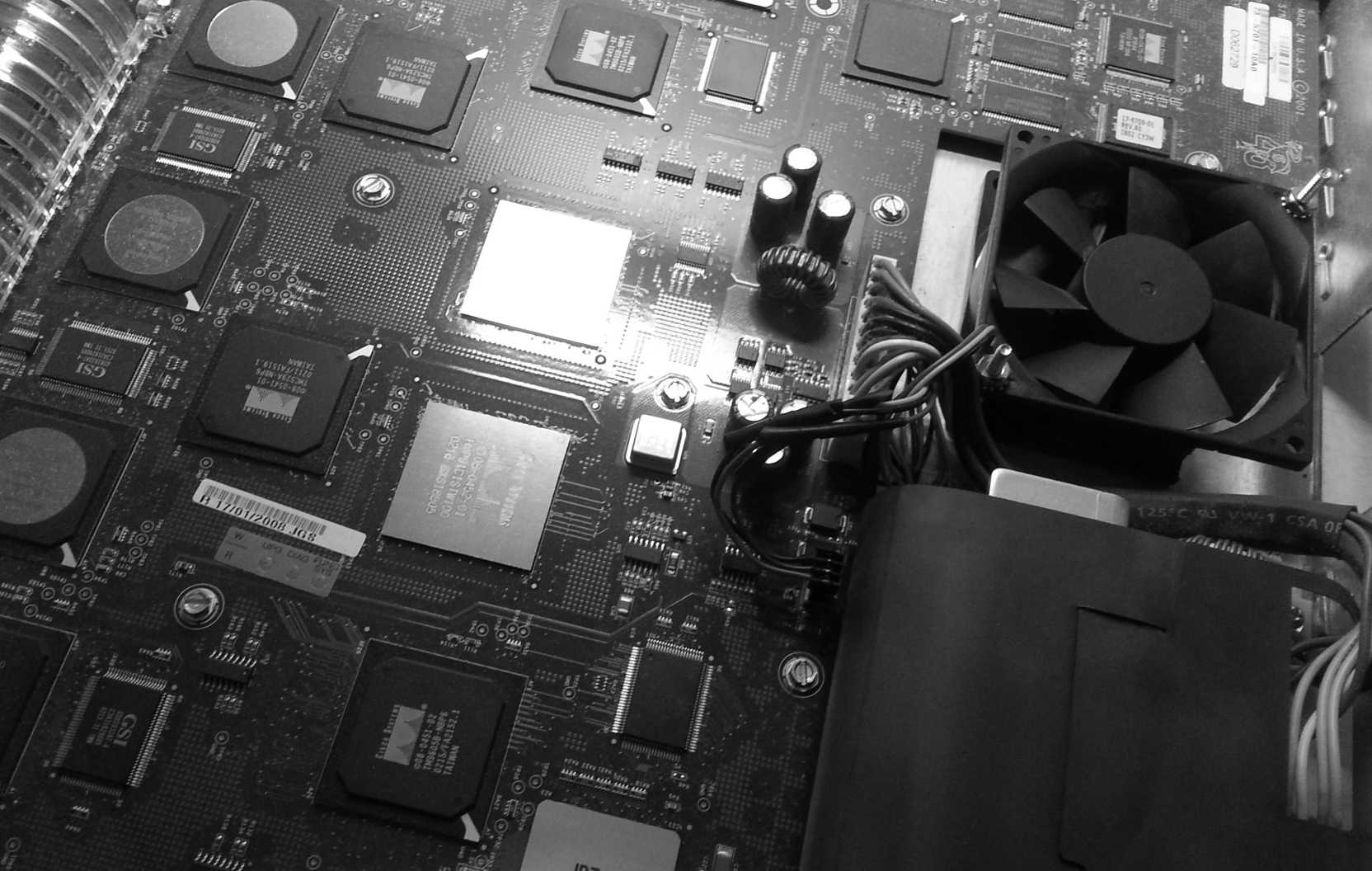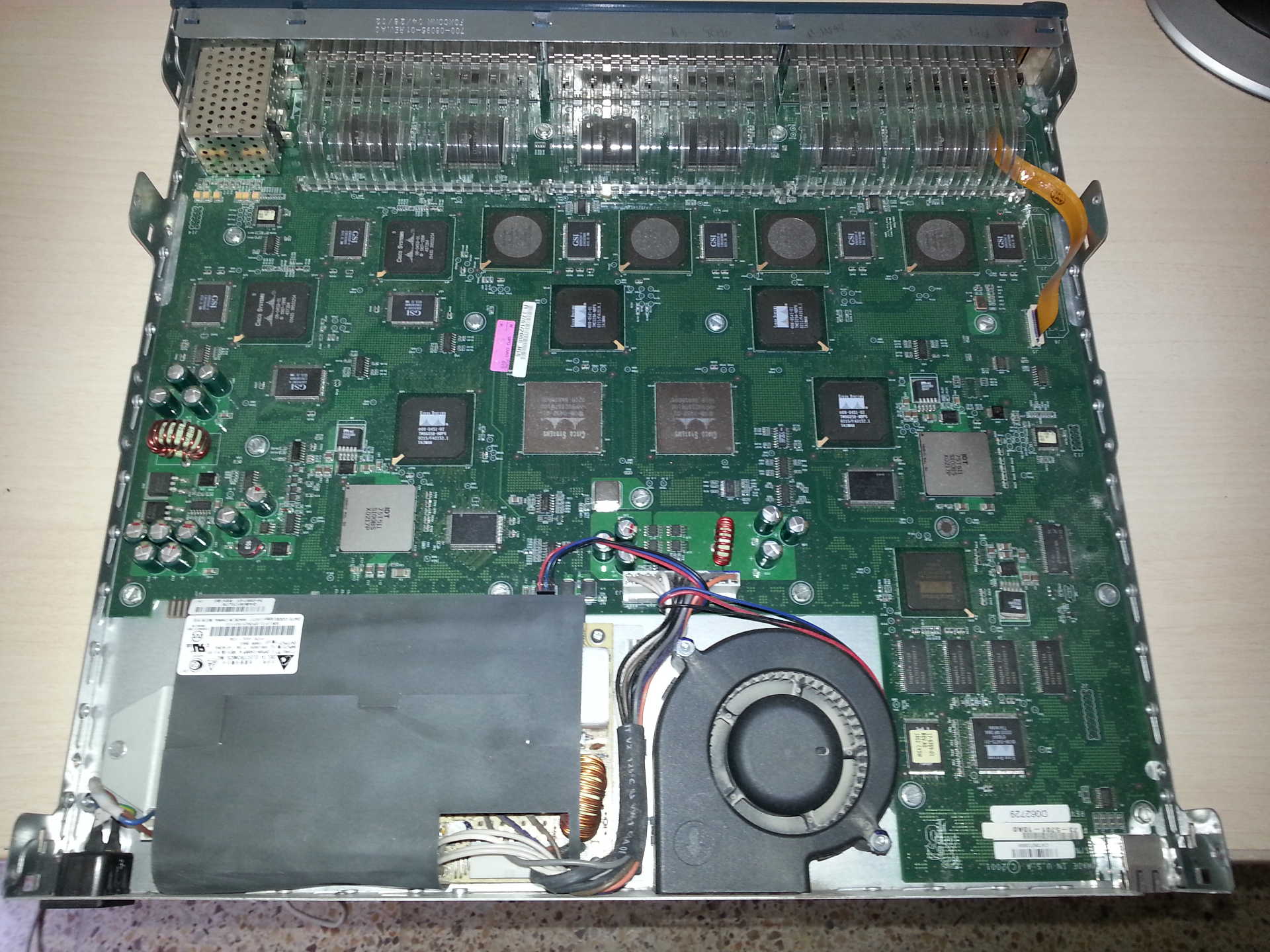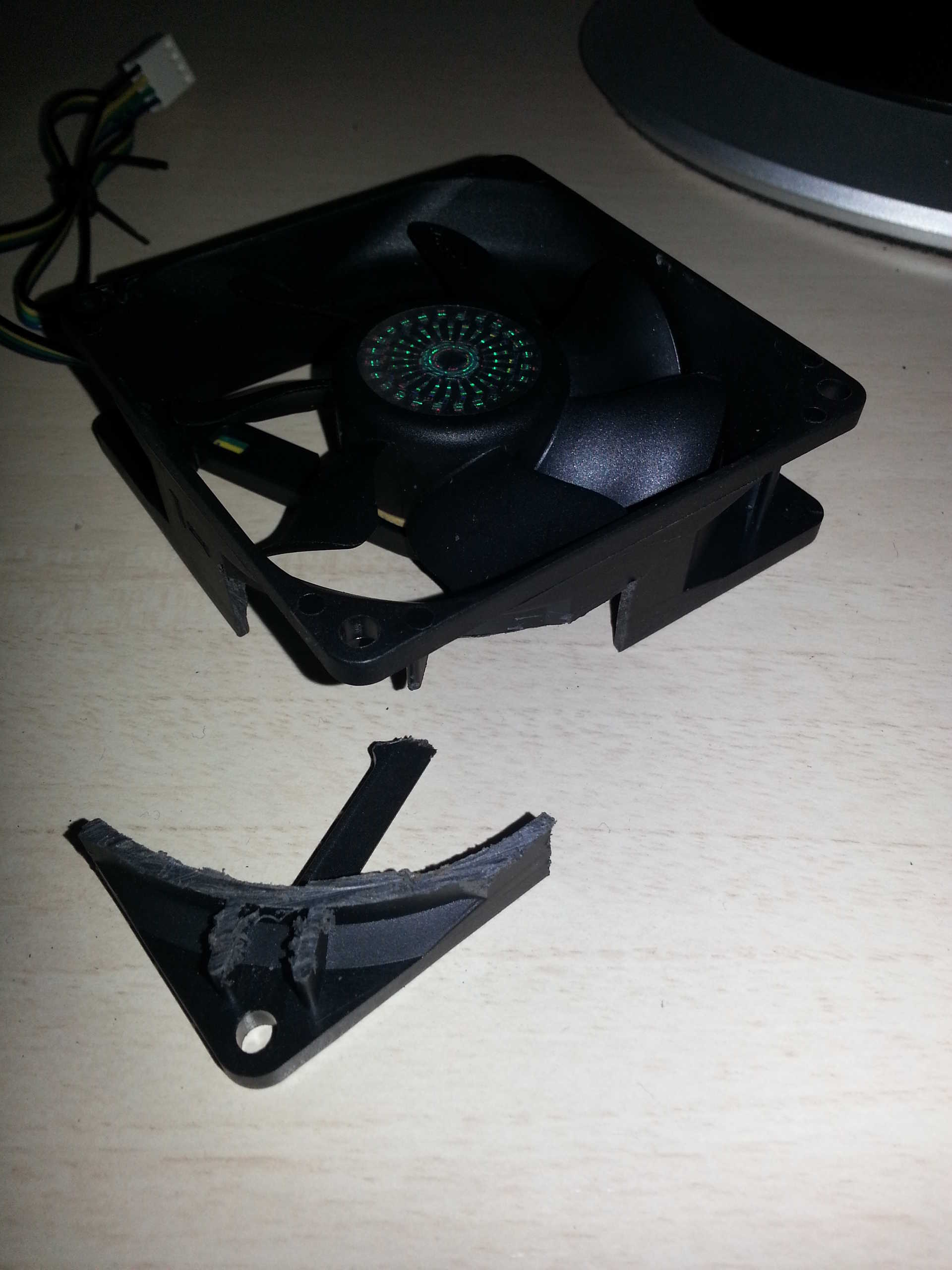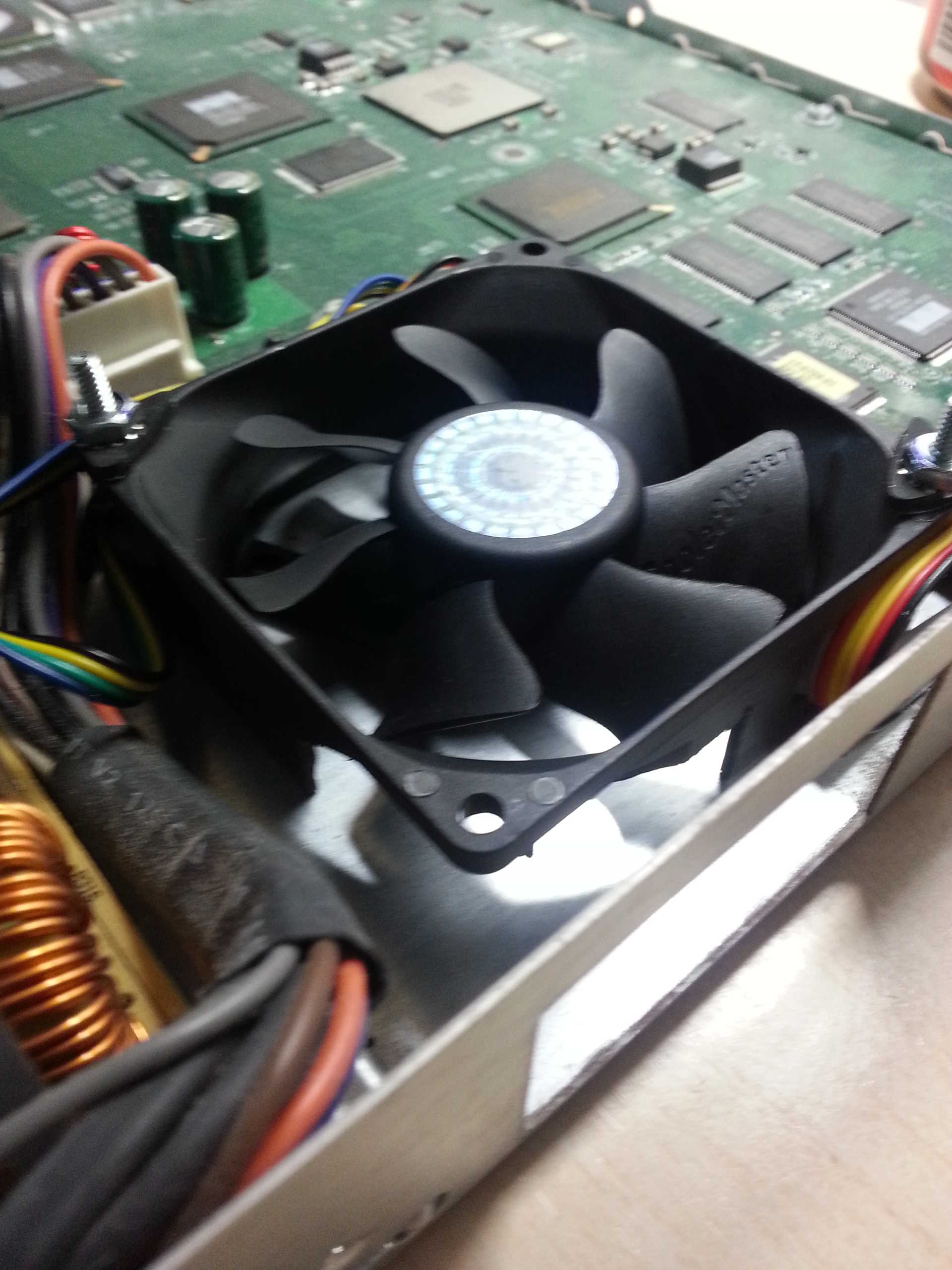Quieting my CCNA Lab Catalyst 3550

Hi again people.
Today I'm writting after successfully make my CCNA Lab CISCO Catalyst 3550 48 port switch reasonably quiet and still cooled down enough to keep temperature under control.

As you may know, Catalyst 3550 series switches go very hot when operating. Its top cover case has thermal isolating foam glued in, in order to avoid getting too hot and warming up its upper rack neighbor, its bottom got also quite hot after a few minutes of running, and since the warming components are spread all across the board, the solution designed by CISCO engineers is a single, top sucking, rearwards exhausting, powerful blower fan, that moves fresh air from case holes on sides, flowing over the board and power supply components, to the rear of the rack.
The problem, obviously, is that for a home CCNA lab, the 46 dB. noise level that the 3550 is oficialy rated at is too high. The blower fan turns at very high rpms, producing its noise level at a specially excruciating sound frequency... So, I decided to do something to solve this.
Early considerations.
As always mandatory in this cases, I'm not responsible of any damage that may occur to your equipment if you try this, so do it at your own risk.
Keep in mind the the only way to operate this device safely and with full operational garanties is at its original state and with its original parts.
Bricomania
The idea I've followed consists on taking profit of the fact tat I'm not going to put my device stacked between other warming devices, as it is designed to be in a rack, but isolated, in a reasonably fresh room in summer or even a little bit cold in winter, so its original cooling capacity is oversized and can be decreased.
I plan to take profit of that cooling capacity decrease margin in favour of quietness.
To do so, I going to replace the original fan blower with a standard, 80 x 80 x 25 PC cooling, silent, high volume flow fan, that fits perfectly on the original blower fixations.
The trick here is that Im going to convert a normal fan into a blower fan by cutting the external fan case.


Aditionally, Im going to use a standard 12V fan control variable resistor to add a control to allow for adjustment on how silent / how hot I want to risk my Switch.
Here, we have to take into consideration the different cable coloring schemes that may be involved.
The 3550 board has a 3 pin connector with a quite standar color for black as negative, red for +12V, and blue for tachometer rmp read from fan.
When working with variable resistors, look carefully their cabling, read docs, or use a multimeter to find out cabling since color is not always something to trust on.
In the variable resistors I purchased, I had to do the following cable pairings:
-
gray on black for negative, red on red for +12V, yellow on blue for tacho, on the cable that goes to board connector
-
black on black for negative, red (fan side) and yellow for +12V, yellow (fan side) on green for the cable that goes from fan to variable resistor.
Remember that standards on common cooling fans are black for negative, red for +12V, and yellow is the tachometer on fans of 3 wires. if there are only 2 wires, normally you'll find black and red. Aditionally, fans with adjustable speed do have a fourth cable to control speed, along with negative, +12V and tachometer, in this case it is better to verify, but a common set is black for negative, yellow for +12V, green is the tachometer, and blue the speed control.
This is how the final assembly looks like:

Observe that air exit is free from cables and points directly to the exhaust square hole on the case rear.
That way, I run my 3550 at a reasonable 16 - 17 dB , barely a whisper, but the fan blowing out a reasonable amount of air.
The CISCO complains of FAULTY FAN very soon, as the fan doesn't spin as quick as CISCO board wants, but I always get a TEMPERATURE OK on 'show env all' command.
Probably something similar could be done to other CISCO blowers... who knows, but, if you own a 3550 for your lab, Enjoy the silence!
